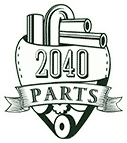06 Mustang Temperature Climate Control Ac Heat Unit Panel Switch 12r625 on 2040-parts.com
San Marcos, Texas, US
A/C & Heater Controls for Sale
 98 century temperature climate control ac heat unit panel switch 12s221(US $49.99)
98 century temperature climate control ac heat unit panel switch 12s221(US $49.99) 01 f250 temperature climate control ac heat unit panel switch 12r858(US $16.99)
01 f250 temperature climate control ac heat unit panel switch 12r858(US $16.99) 98 neon temperature climate control ac heat unit panel switch 12s004(US $26.99)
98 neon temperature climate control ac heat unit panel switch 12s004(US $26.99) 08 uplander temperature climate control ac heat unit panel switch 12r573(US $49.99)
08 uplander temperature climate control ac heat unit panel switch 12r573(US $49.99) 03 santa fe temperature climate control ac heat unit panel switch 12r991(US $89.99)
03 santa fe temperature climate control ac heat unit panel switch 12r991(US $89.99) 03 cts temperature climate control ac heat unit panel switch 12r907(US $39.99)
03 cts temperature climate control ac heat unit panel switch 12r907(US $39.99)
2010 Ford Mustang Revealed
Tue, 18 Nov 2008Exterior image of the 2010 Ford Mustang The new Mustang is very clearly a Mustang, but with more than a passing resemblance to the more modern American Muscle cars, like the Camaro. One of the big let-downs of Yank-Tanks has always been the poor interior. With dashboards that look (and feel) as if they’ve been made out of recycled Fairy Liquid bottles, and more shake, rattle and roll than Bill Haley, the interiors were always one of the main reasons us Brits just couldn’t live with the cars.
Volkswagen Neeza concept
Mon, 20 Nov 2006By Phil McNamara/Georg Kacher First Official Pictures 20 November 2006 09:00 VW Neeza concept: the lowdown Volkswagen is developing a Ford S-Max rival – and this Neeza concept gives a clue to its thinking. Designed in China and unveiled at the Beijing motor show, the Neeza is a five-seat crossover MPV. And that's the exact concept that's under development by Volkswagen's R&D team, with a launch target of 2009.
MIT researchers rethink electric-car batteries
Wed, 08 Jun 2011Researchers at the Massachusetts Institute of Technology say a new battery design for electric vehicles could be a lightweight and inexpensive alternative. The goal for the team's three-year project, launched in September 2010, is to have a functioning prototype ready to be engineered as a replacement for existing electric-car batteries. At this point in the project, the prototype uses a “semi-solid flow” to separate the two functions of a battery--storing energy and discharging it when needed--into separate physical structures.

